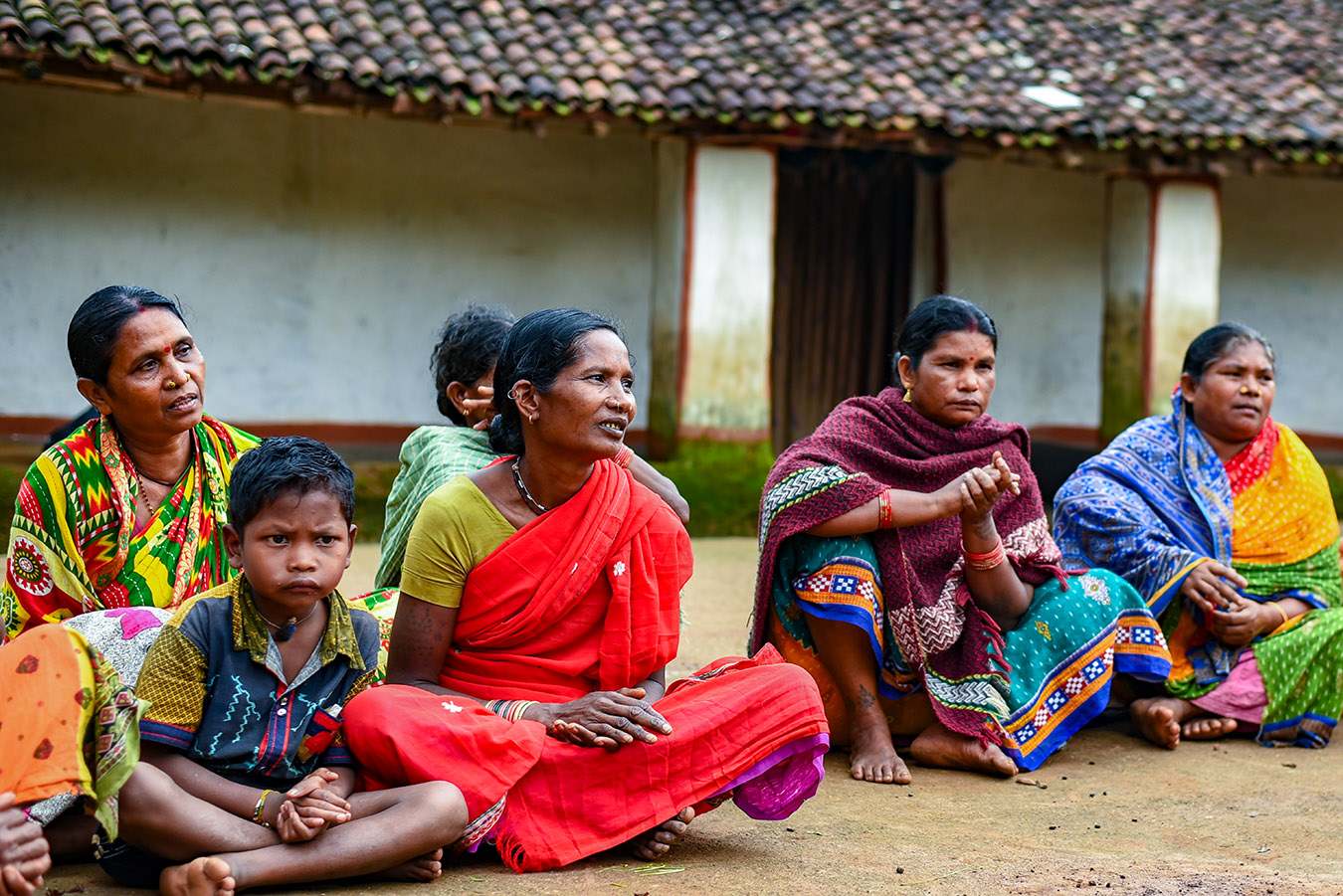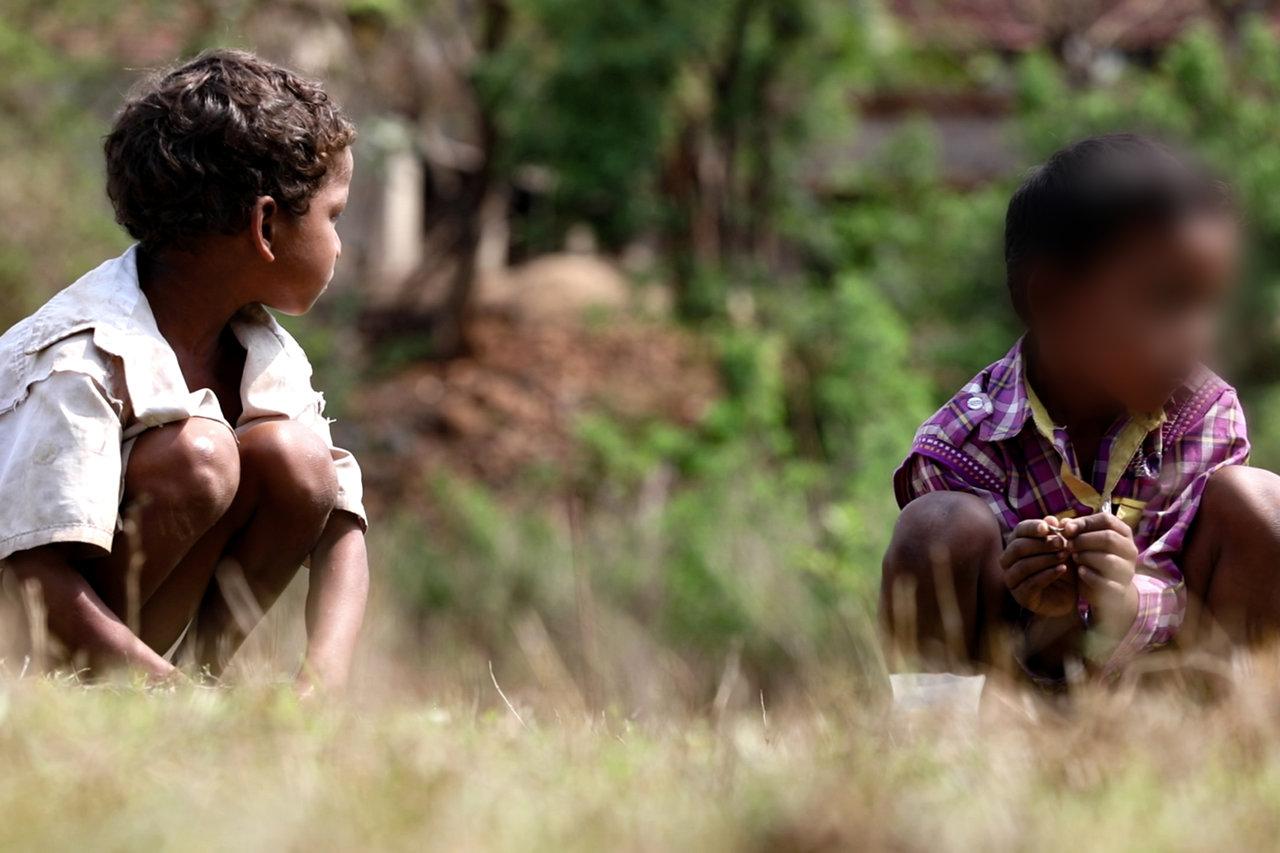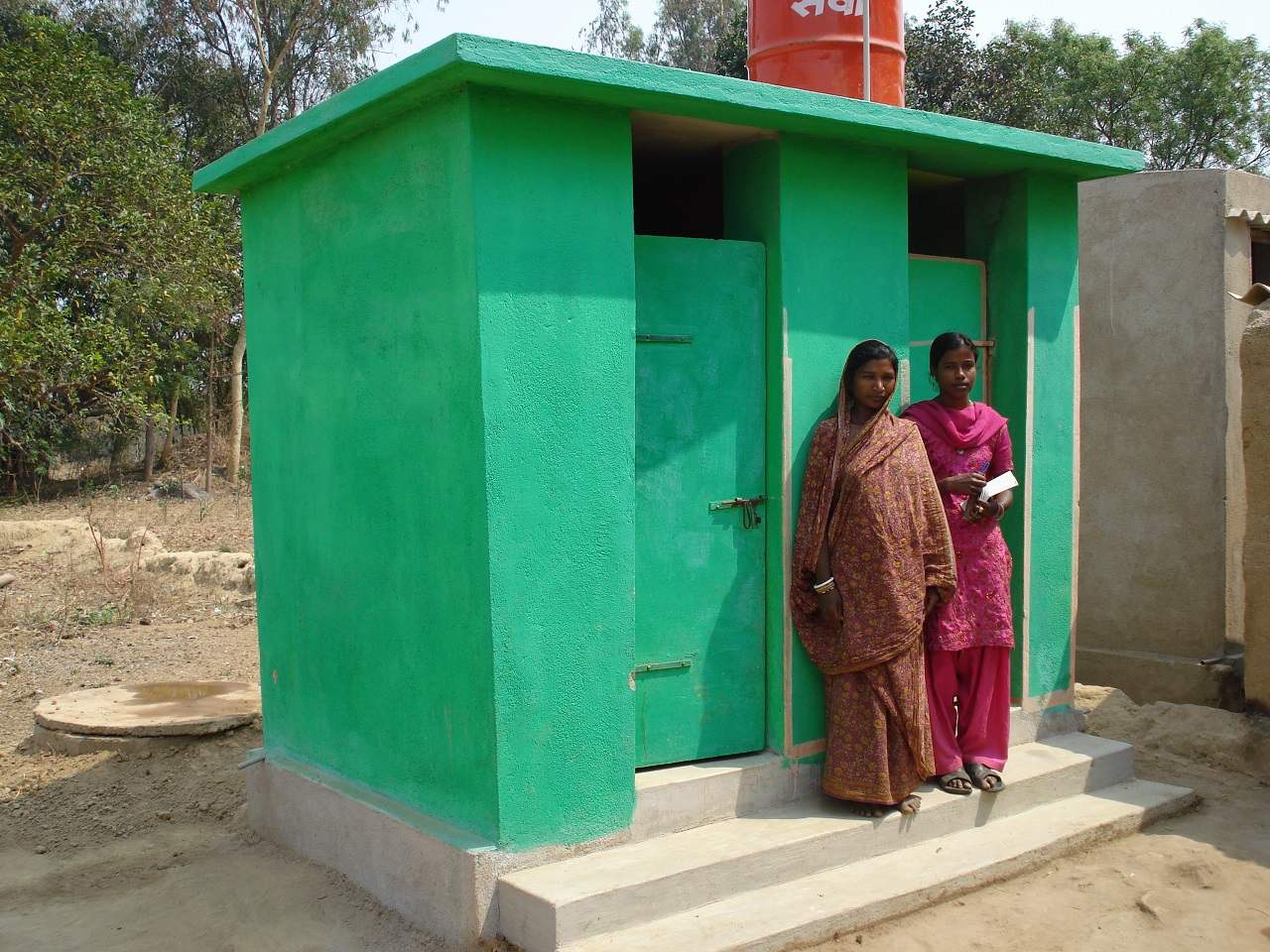Opinion | How can civil society institutions preserve and promote India’s constitutional values?
FeatureBy Vijay Mahajan
19 April 2019

Women gathered for a community meeting in rural Odisha. Photograph by Ajaya Behera.
In September 2018, the newspapers reported the death of four young, migrant sanitation workers while cleaning sewers in Delhi. As per an article in India Today: “One sanitation worker died every third day in the country. According to data collected by…NGO Safai Karmachari Andolan…221 sanitation workers have died since January 2017.” How does this stark reality square with the values that the Constitution enshrined in its Preamble – justice, liberty, equality and fraternity? The Parliament protects and promotes these values through various laws such as the Manual Scavenging Prohibition Act, 1993, and judgments of the Supreme Court.
Though violated in spirit many times, the Constitution has endured. Despite several rude shocks and over a hundred amendments, the “basic structure” of India’s founding vision has persevered, in spite of over a hundred amendments, and thousand, nay lakhs of attempts to subvert it.
But there are also persistent attempts by civil society institutions (CSIs) and social activists to uphold the values of the Constitution. I want to use this piece about Gram Vikas to ask – how can CSIs such as Gram Vikas be enabled to preserve and promote India’s constitutional values?
Civil society institutions build social and political consciousness
There is no mention nor role given to CSIs in the Constitution, though Article 19, enshrines the right to form associations as a fundamental right. And CSIs are the primary associations which build social and political consciousness.
The transformational intent of the Constitution was operationalized in the Directive Principles in Articles 38 to 51, which lay down a very ambitious agenda for social, economic and political transformation. But by mandating the State to address that agenda, in a way, moved the primary transformational role from Civil Society to the State. So when Article 38 (1) begins by saying “The State shall strive to promote the welfare of the people…”, it is often interpreted (wrongly) by some that ONLY the State may strive to promote the welfare of the people and anybody else doing so is doing it illegitimately.
There lie the roots of the question that every CSI worker has to face from the constitutionally elected Sarpanch or the constitutionally appointed civil servant.
I remember the Collector of a tribal district in Madhya Pradesh asking me in 1985 – “Aapko is zillay mein kaam karnay ki anumati kisne dee hai?” (Who has permitted you to work in this district?) My mumbling that as a citizen I could work anywhere I liked, infuriated the gentleman so much that he threatened to have me and my colleague Sankar Datta declared as Naxalites and have us arrested!
Spats of CSI workers with Sarpanchas are well-known to all of us.This mentality is widespread – from members of Panchayats to the Members of Parliament, and from Chaprasis of Block Development Officers to Chairmen of regulatory authorities.
Yet CSIs have persevered and in many important ways have built and preserved the constitutional vision of the social, economic and political transformation of India. How they have done so requires us to look at the micro-detail of how a CSI works on the same issue of transformation as government agencies.

Focus on toilet construction without adequate focus on water supply has made it difficult to end open defecation in India despite Swachh Bharat Mission. Photograph by Ajaya Behera.
Swachh Bharat Mission and the constitutional vision
Let us take the example of sanitation, now synonymous with the Swachh Bharat Mission (SBM). Some of us are led to believe that it began only in 2014. But it existed since the 1990s as the Total Sanitation Campaign and was part of Gandhiji’s “constructive work” all through the freedom struggle.
The 74th Amendment to the Constitution, enacted in 1992, gave elected Municipalities the “power, authority and responsibility” for providing sanitation facilities, among other subjects under Article 243W, detailed in Schedule Twelve. The Census of India, 2011, reported that in Mumbai, the nation’s financial capital, 33 per cent of all households did not have access to a latrine within their premises and while 31.5 per cent used community toilets, 1.5 per cent defecated in the open.
The Swachh Bharat Mission offered more funds for toilet construction. But the rules did not let funds for toilets to those who most needed sanitation.
The Assistant Municipal Commissioner of Mumbai, our biggest city, said the following in the context of a bunch of dwellings in Mankhurd, as quoted in a report by Tabassum Barnagarwala in the Indian Express, 5th March 2016: “Since this is a transit camp the Municipal Corporation of Greater Mumbai cannot provide a toilet. If they shift, the investment will be wasted. It is also not a notified slum [1].”
While the Swachh Bharat Mission offered subsidies for the construction of individual toilets, it also encouraged the use of other means to “persuade” people to build toilets.
See the news item below filed by Rama Laxmi in the Washington Post, 8 Sept 2016:
“India’s government has been on a public toilet building spree. Now, it’s trying to shame people into using them. An aggressive new campaign ridicules those who are no longer poor but continue to defecate in the open — a practice that remains common in rural India despite its growing wealth and trappings of modern life…Television commercials and billboards now carry a message that strikes at the heart of the Indian contradiction of being the world’s fastest-growing major economy and also where relieving oneself in the open is the norm in most villages. Since Prime Minister Narendra Modi’s “Clean India” mission set a target of 2019 to end the practice, the government built millions of new toilets [2].”
Shaming citizens into compliance
Once the state decided to shame citizens into compliance, other consequences followed. As reported by Mohammad Hamza Khan in the Indian Express on 17 June, 2017: “A 44-year-old man died in Rajasthan’s Pratapgarh after being allegedly assaulted by the local civic body chief and three other municipal council employees engaged in the Swachh Bharat campaign after he objected to them taking photographs of women defecating in the open, said police [3].”What happened above has been legitimised by state action to bring about a Swachh Bharat at any cost.
From Gandhiji’s emphasis on sanitation all along with the freedom movement to a Constitutional Amendment in 1992 making Municipalities responsible for providing sanitation, to the Swachh Bharat Mission in 2014, to the beating to death of a man who objected to municipal officials taking photographs of women defecating in the open. Is this progression towards a civil society?
Let us contrast this with how CSIs have approached the same issue of sanitation.

Women in front of a toilet-bathroom unit built under the MANTRA model of Gram Vikas. In rural Odisha, photograph by Ajaya Behera.
Distinguishing features of Gram Vikas approach to sanitation
Gram Vikas, whom I have known since 1982 and whose field operations I have visited several times, has a programme called MANTRA, the purpose of which is to provide piped drinking water and toilet and bathing facilities to each and every household in a village. As of March 2017, Gram Vikas had implemented the programme in over 1250 villages across 28 districts in the state of Odisha, India.
Mair and Seelos in an article “Water is Power” in the Stanford Social Innovation Review, Impact India Spring 2017 [4], explain the process graphically, excerpted below:
“MANTRA has four distinguishing features that contribute to its success. First, the program has a 100 per cent inclusion rule that requires villagers to work together across religious, social, and economic divisions to construct water and sanitation facilities. The program begins only after each household in a village has agreed to this rule.
Second, a multi-layered governance structure formalizes equal representation for all social groups. This structure includes a Village Executive Committee that takes responsibility for implementing the program and for maintaining and monitoring the use of newly built water and sanitation infrastructure.
Third, the Village Executive Committee administers a “corpus fund,” which ensures that financial resources will be available to build water and sanitation infrastructure for families that enter the village after completion of the initial program. Each household must contribute to the fund according to its ability to pay.
Fourth, the construction of water and sanitation infrastructure is a collective effort. Each household must contribute labor and material resources to the program, and Gram Vikas supplements household contributions by providing material support and technical know-how.
Underlying all of these features is a model of social change whose applicability extends well beyond this one programme. The manifest goal of MANTRA is to bring water and sanitation to people in rural villages. Yet the leaders and staff members of Gram Vikas also have a deeper goal in mind: They seek nothing less than to transform patterns of inequality within those villages.”
Gram Vikas promotes our constitutional values of equality and fraternity at the grassroots level. By working for the development of tribals in some of the remotest areas of Odisha such as Thuamul Rampur in Kalahandi district of Odisha, Gram Vikas has put in practice for decades, the highest ideals that we hold dear and which are enshrined in the preamble of the Constitution.
Though I no longer serve on its Board, I remain a well-wisher and admirer of the development work being done by Gram Vikas and wish it many, many decades of continued success.
References
1. Tabassum Barnagarwala. Transit camp without functional toilet blocks: Right to proper sanitation violated at Mankhurd, Mumbai. March 5, 2016. The Indian Express.
2. Rama Lakshmi. India’s government is now shaming people into using toilets. September 8, 2016. The Washington Post.
3. Hamza Khan. Rajasthan officials beat man to death after he objects to their photographing women defecating in open. August 20, 2018. The Indian Express.
4. Johanna Mair & Christian Seelos. Water is Power. Stanford Social Innovation Review. Impact India 2.
Vijaya Mahajan at the 40th Anniversary celebrations of Gram Vikas. Photograph by Ajaya Behera.
ACKNOWLEDGEMENT
This featured article by Vijay Mahajan is the first in a series of opinion pieces by leaders and experts in the development sector reflecting on Gram Vikas' work in relation to social issues, solutions and government.
ABOUT THE AUTHOR
Vijay Mahajan is a co-founder of PRADAN and Basix Social Enterprise Group, which has helped millions of poor households reduce poverty through microfinance and livelihood promotion. He is currently the CEO of Rajiv Gandhi Foundation and the Director of Rajiv Gandhi Institute for Contemporary Studies. An alumnus of IIT Delhi and IIM Ahmedabad, he is a leading social entrepreneur.
RELATED BLOGPOSTS
A remote Adivasi village takes steps to ease water stress through efficient groundwater management
A community-led approach ensures water security, sustaining life in harmony with the environment.
From stigma to sustainability: Transforming menstrual health in schools and villages of rural Odisha
A menstrual health initiative promotes eco-friendly practices while empowering young girls and women with sustainable health solutions.
Lost words, found voices: A language revival adventure in rural Gajapati
An SBI YFI Fellow learns Saura and works with students to create an audio-visual dictionary.